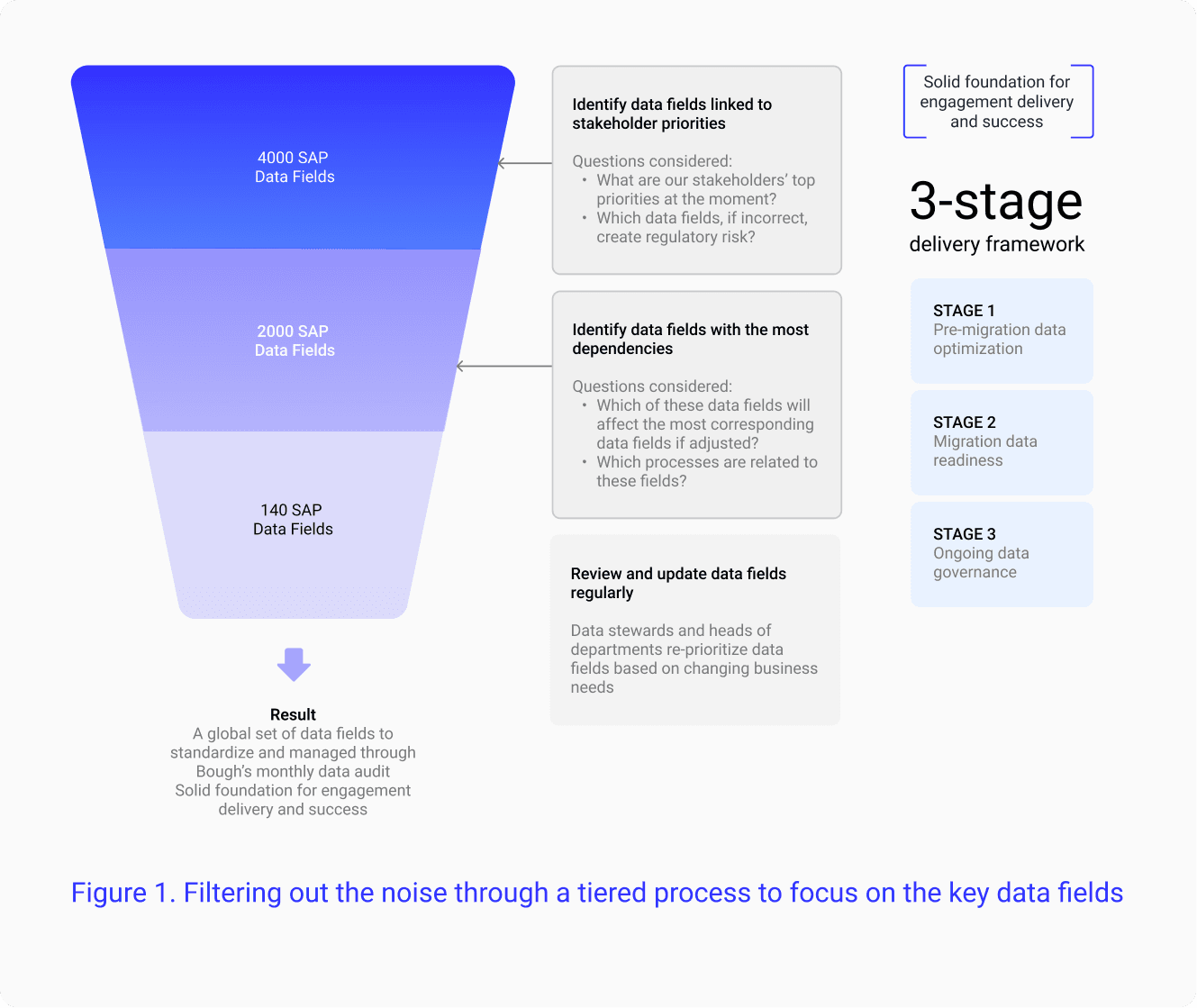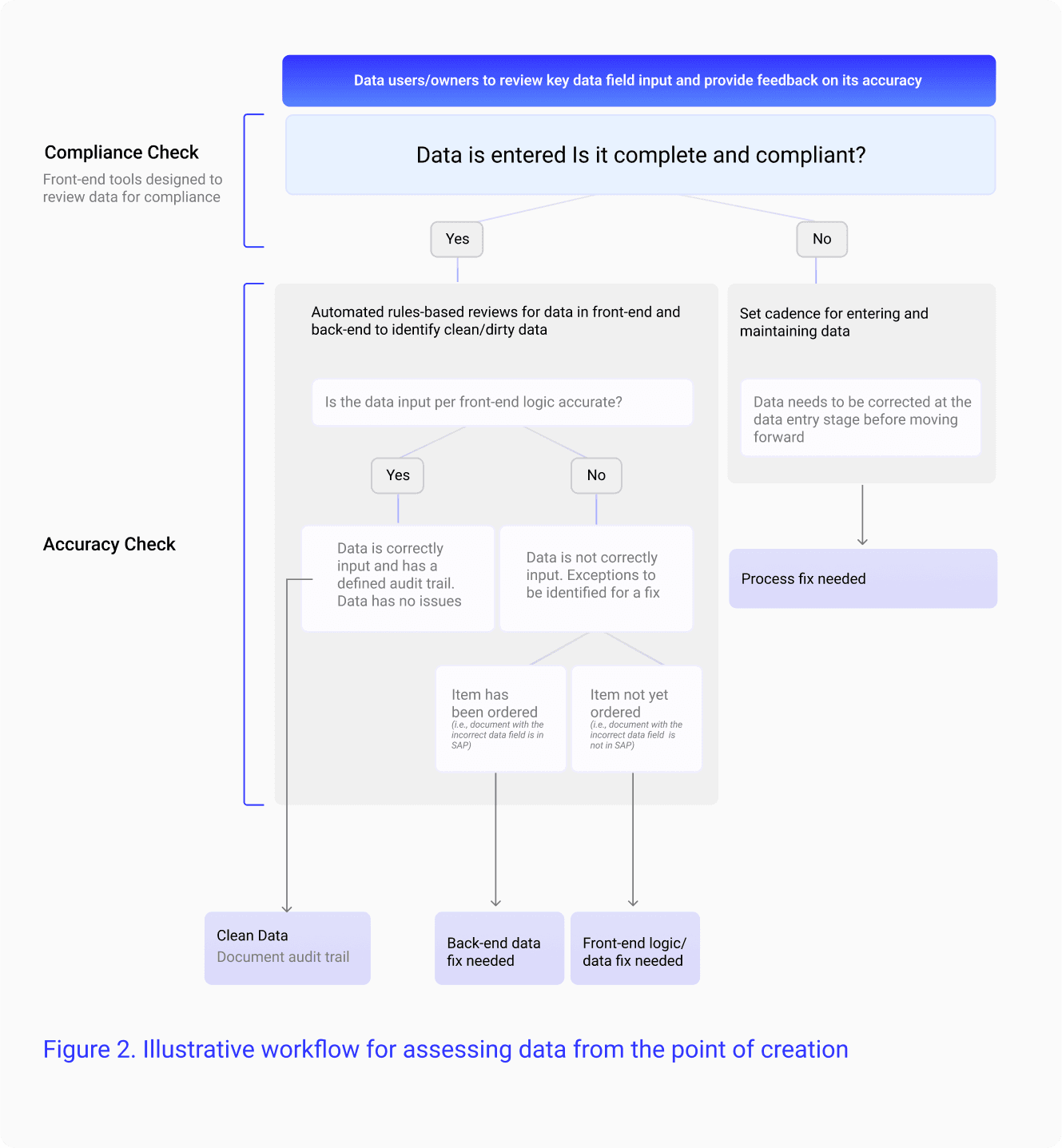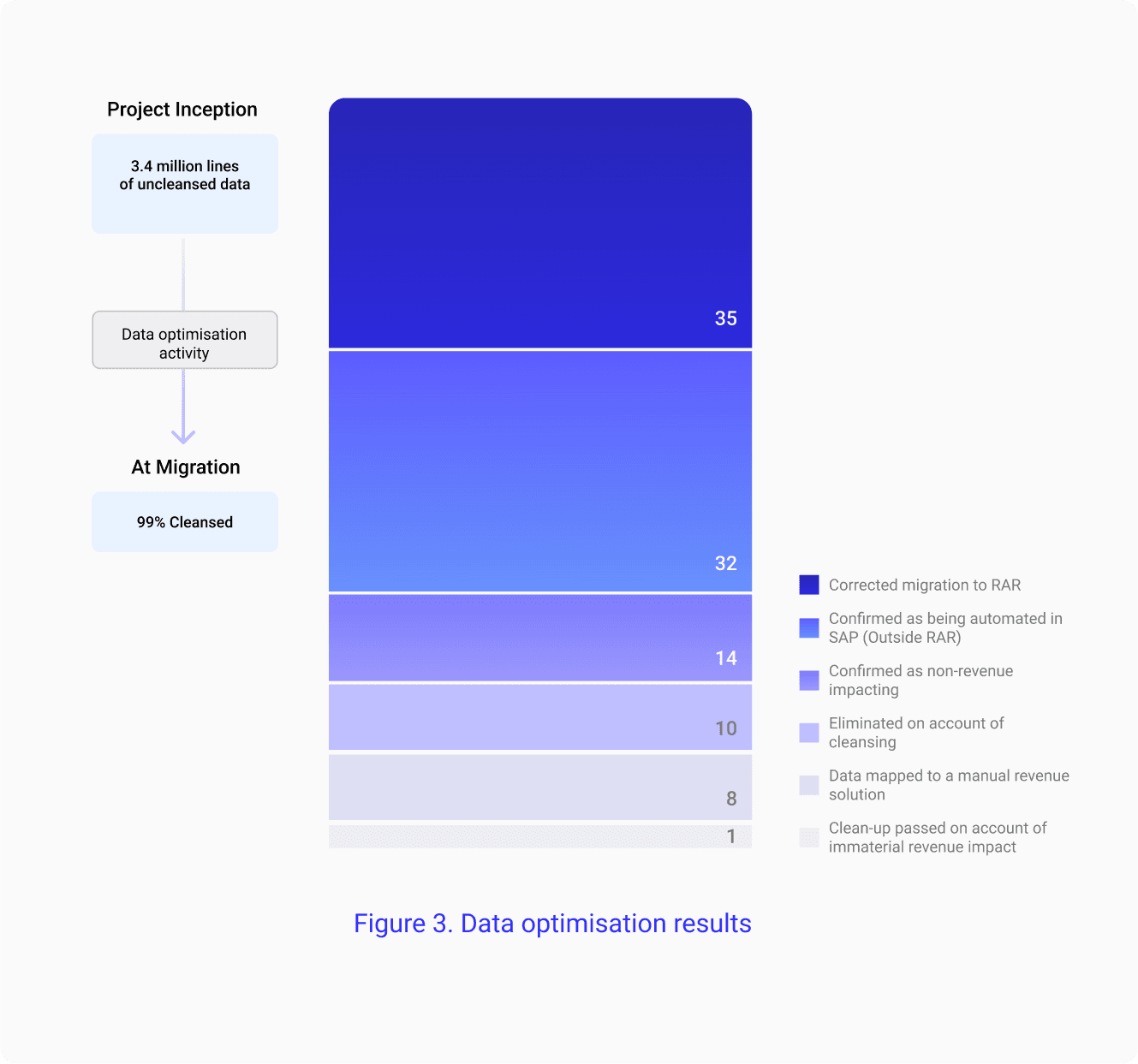
Bough helps a global technology company implement an effective and a cost-effective revenue assurance program to ensure regulatory compliance and meet audit requirements
Revenue data management
Drive data literacy and accountability
Review pain-points and determine root cause of data quality issues
Implement data controls
Automated data stewardship platform implementation
Treading unchartered waters
Operating in over 60 countries and supported by 9,000 employees, this leading technology and communications company hadn’t historically focused on data quality and master data management as part of its business information management strategy. As a result, its data quality had degraded over time, resulting in a variety of issues.
For example, inconsistent product categorization adversely impacted accuracy of revenue recognition treatment, while challenges with customer data resulted in manual accounting rework. Additionally, obsolete data in its systems required extensive labor to monitor, maintain, and action.
Background and challenge
The company was looking to implement SAP RAR, an automated revenue recognition and accounting solution. Yet, significant data challenges, both known and unknown, emerged as the primary obstacle. As a result, the company needed immediate help in identifying and addressing their data quality issues.
To combat inaccurate, inconsistent, and out-of-date data, the client needed to overhaul how it defined, measured, and maintained data quality within its various revenue data impacting systems. There was a need to: drive data accountability, document data definitions, standards and metrics to measure data quality; review existing pain-points and determine the root cause of data quality issues; and assist business teams in troubleshooting accounting issues caused due to bad data
Solution
To make standardizing and optimizing data fields in the global revenue platform manageable, we prioritized small number of data fields based on their degree of impact and importance to business priorities. We compiled data and process maps to help data producers and owners fix data and prevent errors going forward
Stage 1 - Pre-migration data optimization
Analyzed the entire migration data dump
Evaluated quality and stability of the data being moved
Defined various inclusion / exclusion criteria based on SAP RAR data quality requirements
Evaluated and categorized each line item per the devised data categorization criteria
Identified and corrected issues

Stage 2 – Migration data readiness
Determined what data to move, and the quality of that data before and after the move
Enabled a solid migration baselining and stakeholder confidence on the go-live
Optimized 99% data to increase precision of SAP RAR results
Reconciled balances between legacy and new reporting systems. Investigated underlying causes for differences identified and suggested appropriate accounting treatment
Stage 3 - Ongoing data governance
Established a strong data quality rules management and monitoring process
Structured root cause analysis to identify and address underlying causes of a problem and prevent future bad data
Built new processes and controls to achieve compliance and provide assurance over data flowing into SAP RAR
Deployed Alteryx and RPA managed solutions to monitor data quality (next to real time data governance)

Results
Data optimization efforts resulted in 99% of SAP records being analyzed and optimized for either transitioning to SAP RAR in an accurate and consistent manner or management through an alternate solution.

Not only was the client successful in alleviating their data quality pain points to meet their SAP RAR migration objectives, but also in establishing a strong foundation to perform more advanced data governance practices:
Improved data quality for SAP RAR migration
Deployed an automated tool to direct revenue data to its appropriate accounting solution
Developed business acumen in staff to ensure data input quality






